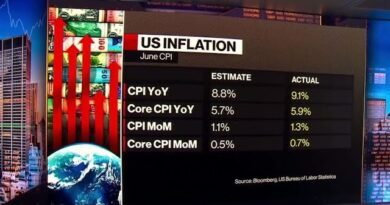
The New Normal: Managing Agricultural Inputs Amidst Market Volatility

The transformative power of new genetics and plant breeding can help to mitigate market volatility.
Over the past three years, the global economic landscape has been marked by unprecedented levels of disruption. When it comes to risk mitigation strategies, it’s crucial to understand the scale of these disruptions.
“What was once a relatively stable environment suddenly shifted dramatically around August 2020, extending through 2023,” says Sam Taylor, farm inputs analyst for Rabobank based in New York.
Fertilizer prices surged threefold, commodity prices doubled, and glyphosate prices tripled.
This upheaval wasn’t caused by a single factor; rather, it stemmed from a multitude of events, including the Texas power crisis, COVID-related disruptions, fluctuating natural gas and coal prices, and environmental concerns.
“These factors, compounded by sanctions and conflicts, created a volatile market driven by what seems like a continuous stream of unforeseen events.”
Examining the affordability index of fertilizers reveals a cycle to the volatility, with periods of peak and trough occurring roughly every 18 months, Taylor says. However, recent events have deviated from this norm, driven largely by global political dynamics and farm income trends. For instance, China’s decision to limit fertilizer exports due to domestic affordability concerns has contributed to the current unaffordability in the phosphate market.
“Looking ahead, the geopolitical landscape will continue to influence fertilizer prices, with factors like China’s export policies and Morocco’s market strategies shaping global supply and demand dynamics,” Taylor says. “While some relief may be on the horizon in the second half of the year, the immediate future remains uncertain.”
This volatility affects not only retailers but also the entire value chain, posing challenges for independent growers like Greg Stamp, who grows and sells seed near Enchant, Alberta, in Canada.
“Market swings dictate our planting decisions, but anticipating these fluctuations is like reading tea leaves. One year, a particular variety may sit in our bins for an extended period, while the next, it becomes the top choice of farmers,” Stamp says.
Furthermore, retailers need to adopt a judicious approach to pricing and resource management, according to Stamp.

“Every aspect, from staff wages to freight charges, must be factored into the equation,” he says.
Moreover, Stamp highlights the pervasive impact of regulatory measures, such as carbon taxes, on the cost structure of seed retailing operations.
“The ripple effects of policies like carbon taxation permeate every facet of the supply chain, necessitating strategic adjustments to maintain profitability. Harnessing economies of scale becomes imperative in mitigating the impact of escalating costs,” Stamp says.
Distribution of Chemistry
On the chemistry side, one of the recurring narratives revolves around the distribution of inventory across different segments of the value chain, particularly within the retail sphere of the Brazilian market, Taylor says.
“Understanding this can be a bit more difficult due to the unique pathways products take to reach consumers. Unlike in some other markets, in Brazil, there’s a tendency for a significant portion of goods to flow directly from major suppliers to large-scale growers. This dynamic often results in unaccounted-for inventory existing at the farm level,” he says.
Recent financial reports seem to suggest that the backlog of inventory is gradually dissipating at the retail level in North America, contrasting with the situation in Brazil.
“There’s still an excess of inventory lingering in the Brazilian market. We anticipate that this inventory challenge might persist into the third quarter. This predicament arises from a confluence of factors: a surge in imports coinciding with a downturn in commodity prices, leading to negative basis levels in certain areas.”
These market dynamics have exerted pressure on profit margins and dampened demand, resulting in the accumulation of inventory.
Despite this, some companies that have significant exposure to the Brazilian market have struck a positive note in their recent earnings reports. Taylor highlights FMC as an example. They’ve indicated strong top-line performance and suggested that inventory is moving more swiftly than previously anticipated, Taylor says.
“However, I still believe that inventory levels will continue to exert downward pressure on pricing within the chemistry sector, especially in Brazil, potentially extending into the latter half of the year. This situation is particularly challenging for farmers, as margins are currently under strain.”
The economic stress in Brazil appears to be even more pronounced compared to the North American market, exacerbating the need for a resolution to the inventory imbalance.
The Fertilizer Situation
In the realm of fertilizers, there’s still a prevailing downward pressure, particularly noticeable in the potash sector. Rabobank has observed some curtailment in Canadian production capacity, and both China and Brazil are showing strong inventory levels.
Coupled with a deteriorating margin environment, this exerts a dampening effect on pricing, which can be beneficial for market dynamics, according to Taylor.
Bruno Fonseca is agricultural inputs analyst for Rabobank based in São Paulo. He says in Brazil — and throughout Latin America — farmers are quite concerned about fertilizer prices, especially as they look ahead to the next crop season.
“We’ve just come out of a season where profit margins were tighter compared to previous years. So now, farmers are really focused on finding ways to cut costs for the upcoming season to regain some of those margins,” Fonseca says.
In this context, farmers are particularly worried about the cost of fertilizer since it makes up a significant portion of their expenses. They’re keen on reducing these costs wherever possible.
“Given the current situation, we’re unlikely to see significant decreases in fertilizer prices from where they stand now. This makes it challenging for farmers who are trying to manage their costs more effectively for the next season.”
The impact of North American or U.S. tariffs remains uncertain. Latin America historically has been a fiercely competitive market for phosphates, with Moroccan suppliers being particularly aggressive in their shipping volumes. Consequently, there’s a bias towards expecting downward pricing pressure, especially for major phosphate products, Taylor adds.

“As for nitrogen fertilizers, there’s a broader trend of falling cost curves, ample availability, and weak demand, particularly evident in regions east of the Suez,” Taylor adds. “Indian demand for urea, a key nitrogen product, doesn’t seem to be robust, which implies that finding markets for nitrogen products might require some effort.”
Overall sentiment leans towards a slightly downward or range-bound trajectory. While affordability issues in the U.S. and North American markets aren’t as severe for growers compared to some other regions, tighter margins suggest a logical downward movement in prices, Taylor says.
“This could be seen as positive news for growers, as it makes essential products more accessible while acknowledging the challenges posed by narrower profit margins.”
Reasons for Optimism
Looking ahead to the 2025 season, there’s optimism that input costs will level out more swiftly than in previous years, providing some respite for farmers. Despite ongoing bearish sentiments toward commodity prices, the expectation is for a more balanced cost environment in the coming seasons, Taylor says. Examining the relative affordability of nitrogen further emphasizes the urgency for cost reductions.
“Despite this, farm income continues to decline, not keeping pace with falling commodity prices. This trend has led to a weaker margin environment, with farmers anticipating significant decreases in net farm income for the upcoming seasons. This could potentially lead to demand destruction and pullbacks in investments,” Taylor says.
The energy complex plays a significant role in global market dynamics, with fluctuations in natural gas and coal prices impacting the nitrogen and pesticide sectors. However, recent trends indicate a gradual decline in production costs, offering some hope for price relief in the future.
Stamp extols the transformative power of new genetics and plant breeding in mitigating such market volatility. Seed emerges as one of the few inputs that can actually help farmers to be more profitable amid economic uncertainty.
“New seed varieties offer some hope amidst economic turmoil, you might say,” Stamp says, emphasizing the relationship between innovation and economic resilience.
“For example, the advent of higher-protein varieties and solid stem cultivars exemplifies the transformative potential of genetic innovation, offering farmers a competitive edge in an unpredictable market landscape.”
As Stamp and his customers grapple with the ebb and flow of economic currents, the importance of strategic planning and adaptive resilience emerges as a crucial theme.
“Harnessing the power of new genetics is not just a luxury but a necessity in an era defined by economic volatility,” Stamp adds.
Taylor agrees.

“Seeds are one of the least discretionary inputs in farming. Of course, seed isn’t just about the crop itself; it’s also a carrier of a vast array of technologies. From seed treatments to gene editing to new traits, seed serves as a conduit for innovation in agriculture,” Taylor adds.
“It’s fascinating to see how seed varieties evolve, and I believe seed will remain a key vehicle for future agricultural technologies as well.”
Fonseca says as we look at the average trends in Brazil we see that, particularly for soybeans, farmers are continuing to expand their planting areas.
This directly increases the demand for soybean seed in the coming years, he says.
On the other hand, for corn, especially the corn planted right after soybean, the demand will depend on the corn prices closer to the planting period, Fonseca adds.
Strategies for Success Amidst Economic Uncertainty in 2024
Gather Information: Invest in systems and processes to gather and analyze information about global market dynamics, including commodity prices, fertilizer prices, geopolitical events, and regulatory changes. This can help in making informed decisions and developing proactive strategies to mitigate risks.
Diversify Supply Sources: Explore opportunities to diversify the sources of seed and other inputs to reduce reliance on specific regions or suppliers that may be impacted by geopolitical or environmental factors. This could involve building partnerships with suppliers from different geographic regions or investing in alternative supply chains.
Mitigate Risk: Develop scenario plans to anticipate various potential disruptions and their impacts on the supply chain. This includes considering scenarios such as trade disputes, extreme weather events, regulatory changes, and shifts in consumer demand. Implement risk management strategies to mitigate the potential negative impacts of these scenarios.
Engage in Policy Advocacy: Engage with policymakers at local, national, and international levels to advocate for policies that support a stable and predictable business environment for seed retailers. This may involve participating in industry associations, lobbying efforts, and providing input into policy discussions related to agriculture and trade.
Invest in Resilience: Allocate resources towards building resilience in the supply chain, infrastructure, and operations. This could include investments in technology, infrastructure upgrades, supply chain optimization, and training programs for staff to enhance adaptability and responsiveness to changing market conditions.
Educate and Support Your Customers: Provide support and education to customers, such as farmers, about the factors influencing input prices and market dynamics. This can help them make informed decisions about crop planning, input purchasing, and risk management strategies.
Plan for the Long Term: Develop long-term strategic plans that take into account the potential impact of ongoing trends and disruptions in the global landscape. This includes evaluating opportunities for innovation, diversification, and sustainable growth while remaining adaptable to changing market conditions.
WHERE ON THE WEB
Watch our full-length webinar on this topic! Visit seedworld.com/seeds-for-success-webinar



